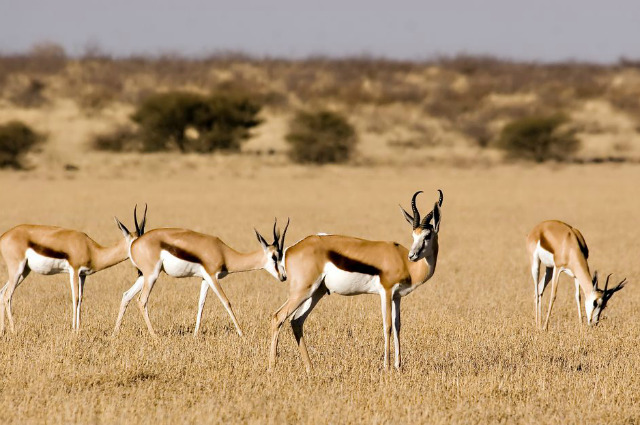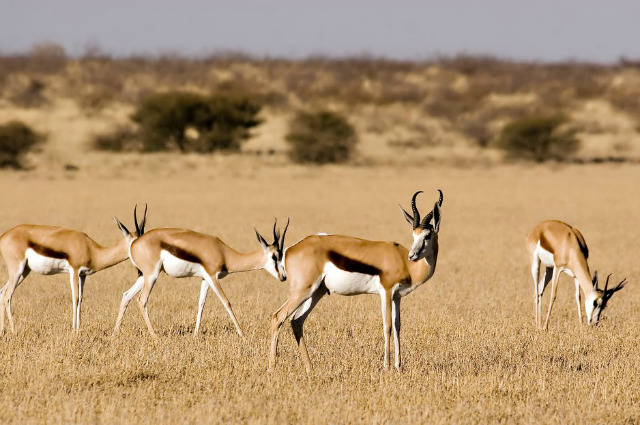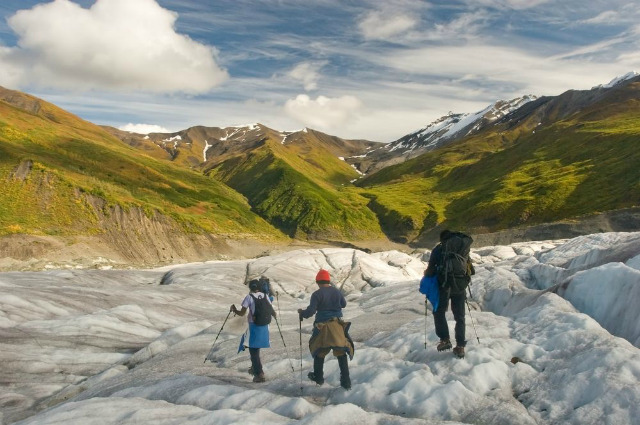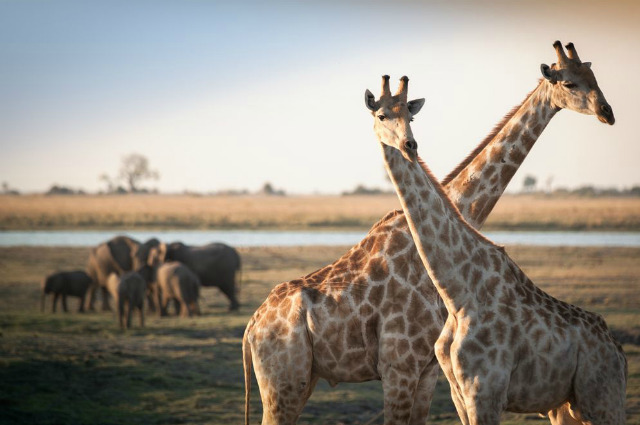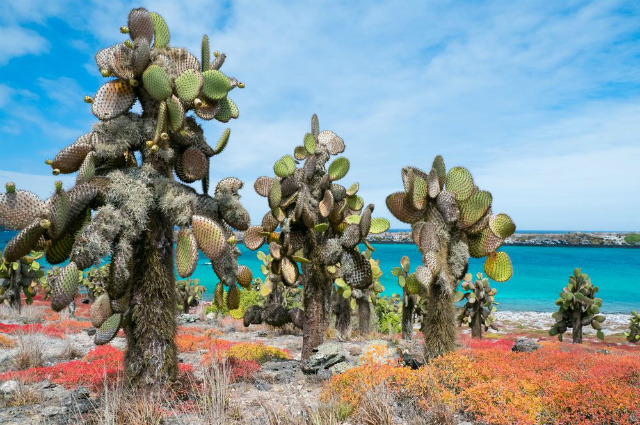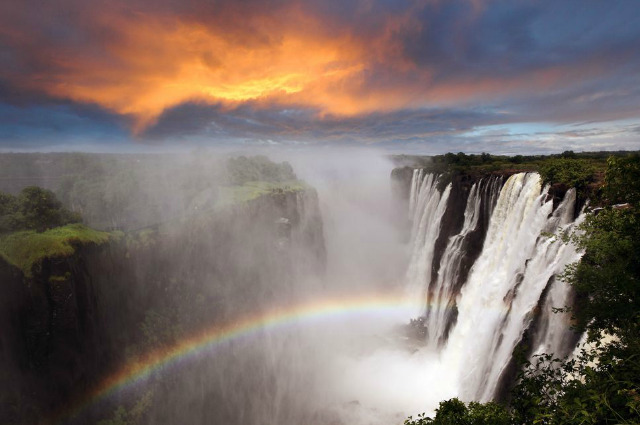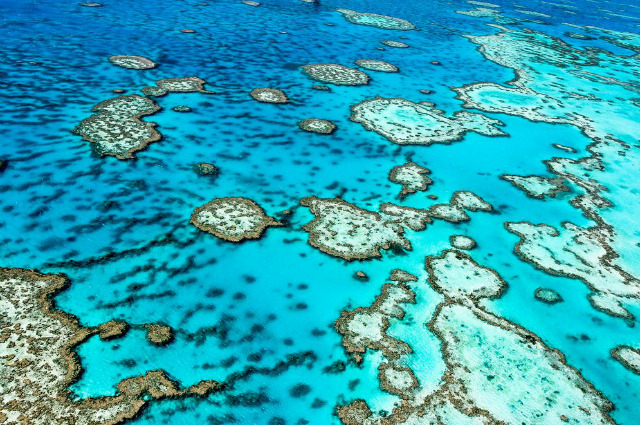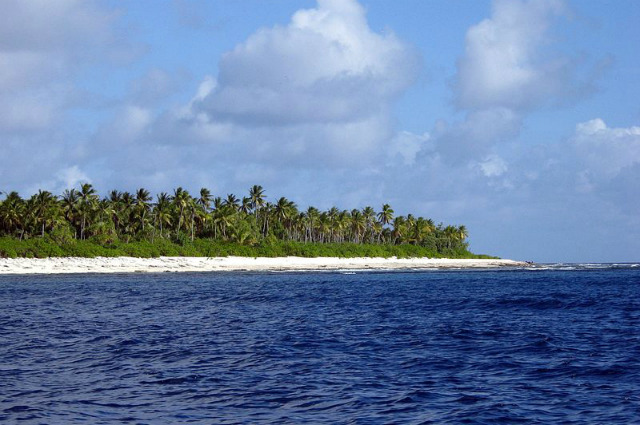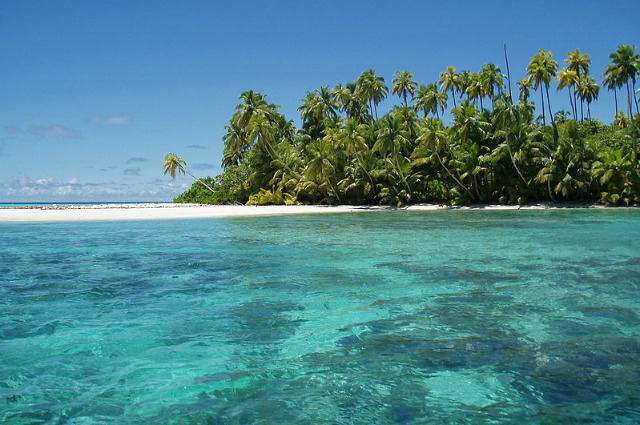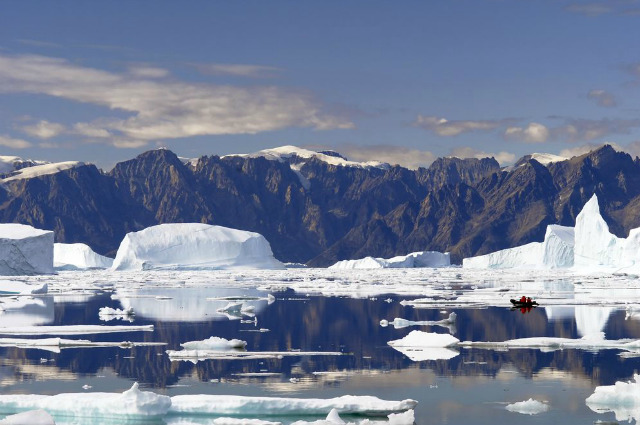World's Largest Protected Areas
#12 Central Kalahari Game Reserve: Botswana
Size: 52,800 square kilometers
Date Established: 1961
To the east of Namib Naukluft Park in southwestern Botswana is the Central Kalahari Game Reserve. This area has a diverse range of habitats including clay pans and fossil river valleys, vegetated sand dunes and woodlands. The many ecosystems help explain why the reserve is home to one of the most unique arrays of biodiversity in Africa. Visitors have the chance to spot brown hyena, wildebeest, black maned lions, giraffes and many different birds of prey.
#11 Wrangell–St. Elias National Park and Preserve: Alaska
Size: 53,321 square kilometers
Date Established: 1980
Larger than the country of Switzerland, Wrangell–St. Elias is the United States' biggest national park and was named for the two mountain ranges that run through the area. If you have a week or more to spare, you can hire an air taxi to drop you off in the wilderness where you will have incredible opportunities to paddle, ski, camp and hike without seeing anyone else for days or weeks on end.
#10 Namib Naukluft Park: Namibia
Size: 59,768 square kilometers
Date Established: 1907
Although exceptionally arid, Namib Naukluft Park–home to one of the world's oldest and largest deserts–is still teeming with life. The area is home to many species including udu, gemsbok, klipspringer, duiker, steenbok, leopard, baboon, black-backed jackal, bat-eared fox, African wild cat, caracal and aardwolf. The area's massive sand dunes, formed by winds that blow in from the Atlantic Ocean, are one of its defining characteristics. With some reaching more than 1,000 feet high, these dunes are some of the tallest in the world. The dunes' characteristic orange-red color, caused by the oxidation of iron in the sand, hints at this area's age.
# 9 Air and Ténéré Natural Reserves: Niger
Size: 77,360 square kilometers
Date Established: 1991
Although this protected area is home to numerous animals, it may be best known for its threatened Saharan desert ungulate species including Dorcas gazelle, Dama gazelle, Barbary sheep and addax. Given the presence of these animals, it's no surprise that the region also hosts numerous healthy carnivore populations of fennec fox and Ruppell's fox, as well as a declining population of cheetahs. In addition, the reserves are home to numerous bird species including the last viable population of West African ostrich. On a visit to the area, you may come across one of the Palaeolithic and Neolithic archeological sites scattered throughout the region or some of the 3,500-7,000 Twareg people who still call this place home. The Twareg maintain a traditional lifestyle of nomadic pastoralism while raising goats and camels.
#8 Great Limpopo Transfrontier Park: Mozambique, South Africa and Zimbabwe
Size: 99,800 square kilometers
Date Established: 2002
Great Limpopo Transfrontier Park covers regions of Mozambique, South Africa and Zimbabwe, creating a transborder wilderness including some of the most established wildlife areas in Southern Africa such as Kruger National Park and Limpopo National Park. Visitors to the area can see the continent's famous Big 5: Lions, leopards, African elephants, cape buffalo and rhinoceros.
#7 Galápagos Marine Reserve: Ecuador
Size: 133,000 square kilometers
Date Established: 1986
When Charles Darwin first visited the Galápagos in 1835, he was struck by how much species varied from island to island. In fact, his observations of the different iguanas, tortoises and—in particular—finches during his initial five-week visit inspired his theory of evolution. Found at the confluence of three ocean currents, the Galápagos has a unique mix of marine species, such as sharks and rays. In addition, the unique altitude, orientation and extreme isolation of the islands led to the evolution of an unusual array of terrestrial wildlife. The Galápagos boasts many different reptiles including lizards, geckos and 11 subspecies of giant tortoises. With the exception of two marine tortoises, these reptiles are all endemic. Notable birds include a vast array of Darwin's finches, the Galápagos flightless cormorant, Galápagos penguin and lava gull.
#6 Kavango-Zambezi Transfrontier Conservation Area: Angola, Botswana, Namibia, Zambia and Zimbabwe
Size: 287,132 square kilometers
Date Established: 2010
This extensive network of parks (also called KAZA) provides vital transfrontier wildlife corridors for species such as lion, zebra, wildebeest and Africa's largest contigous elephant populations. KAZA includes 17 different game and national parks including Victoria Falls National Park (pictured) and Zambezi National Park.
#5 Great Barrier Reef Marine Park: Australia
Size: 345,400 square kilometers
Date Established: 1975
The Great Barrier Reef is the largest coral reef (and largest living structure) on the planet, and was elected a UNESCO World Heritage site in 1981. The marine park includes 3,000 coral reefs, 600 continental islands, 300 coral cays and approximately 150 inshore mangrove islands. Home to 1,500 species of fish, 4,000 types of mollusk and endangered species including the dugong and the large green turtle, this area is of significant scientific interest and biological importance.
#4 Papahānaumokuākea Marine National Monument: Hawaii and the Midway Atoll
Size: 360,000 square kilometers
Date Established: 2006
Papahānaumokuākea became the first mixed UNESCO World Heritage Site when it made the list on July 30, 2010. The unique nomination recognized the area's significant biological and cultural importance. Indigenous Hawaiians navigated these waters for thousands of years and modern Hawaiians still travel through the area in traditional double-hulled sailing canoes for navigational training. In addition, Papahānaumokuākea is a nesting and foraging ground for 14 million seabirds and one of the last predator-dominated coral reef ecosystems on Earth with an abundance of sharks and jacks.
This protected area includes ten islands and atolls in the northwest main Hawaiian Archipelago and includes the Hawaiian Islands National Wildlife Refuge, Midway Atoll National Wildlife Refuge, Battle of Midway National Memorial, Hawaii State Seabird Sanctuary at Kure Atoll and the Northwestern Hawaiian Islands State Marine Refuge.
#3 Phoenix Islands Protected Area: Kiribati
Size: 408,250 square kilometers
Date Established: 2008
Although this protected area is roughly the size of California, its total land area is just 9.7 square miles. PIPA includes all eight atolls and low reef islands of the Kiribati section of the Phoenix Islands, and its abundance of extinct underwater volcanoes provide a variety of marine habitats. Conservation International named the Phoenix Islands as a Key Biodiversity Area and five of the eight islands were named Important Bird Areas by Birdlife International. This area is home to what is believed to be the the largest concentrations of some species in the world, including the vulnerable white-throated (Polynesian) storm-petrel, lesser frigatebird and blue noddy.
#2 Chagos Marine Protected Area: British Indian Ocean Territory
Size: 640,000 square kilometers
Date Established: 2010
This marine reserve, located in the central Indian Ocean, is twice the size of the UK and protects the world's largest coral atoll and one of the most pristine reefs in the world. Thanks to a generous donation from the Bertarelli Foundation (funded by Italian-born Swiss billionaire Ernesto Bertarelli), the policing of this no-take protected area will be funded through 2015. The Chagos Archipelago comprises 55 tiny islands home to 20 species of coral, 784 different species of fish, green and Hawksbill turtles, 18 species of birds, and the world's largest terrestrial arthropod: the coconut crab.
#1 Northeast Greenland National Park: Greenland
Size: 927,000 square kilometers
Date Established: 1974
When Denmark decided to establish a wilderness area in its protectorate Greenland, the country did it once and did it right. The only national park on the world's largest island is bigger than all but 30 countries. Forty percent of the world's musk ox population, as well as polar bears, walrus, arctic fox, snowy owls and numerous other species call this place home. If you want to visit, make sure to plan your trip and pack carefully. This area stays in near-darkness for four months out of the year and summer temperatures are rarely above 40 degrees fahrenheit.
